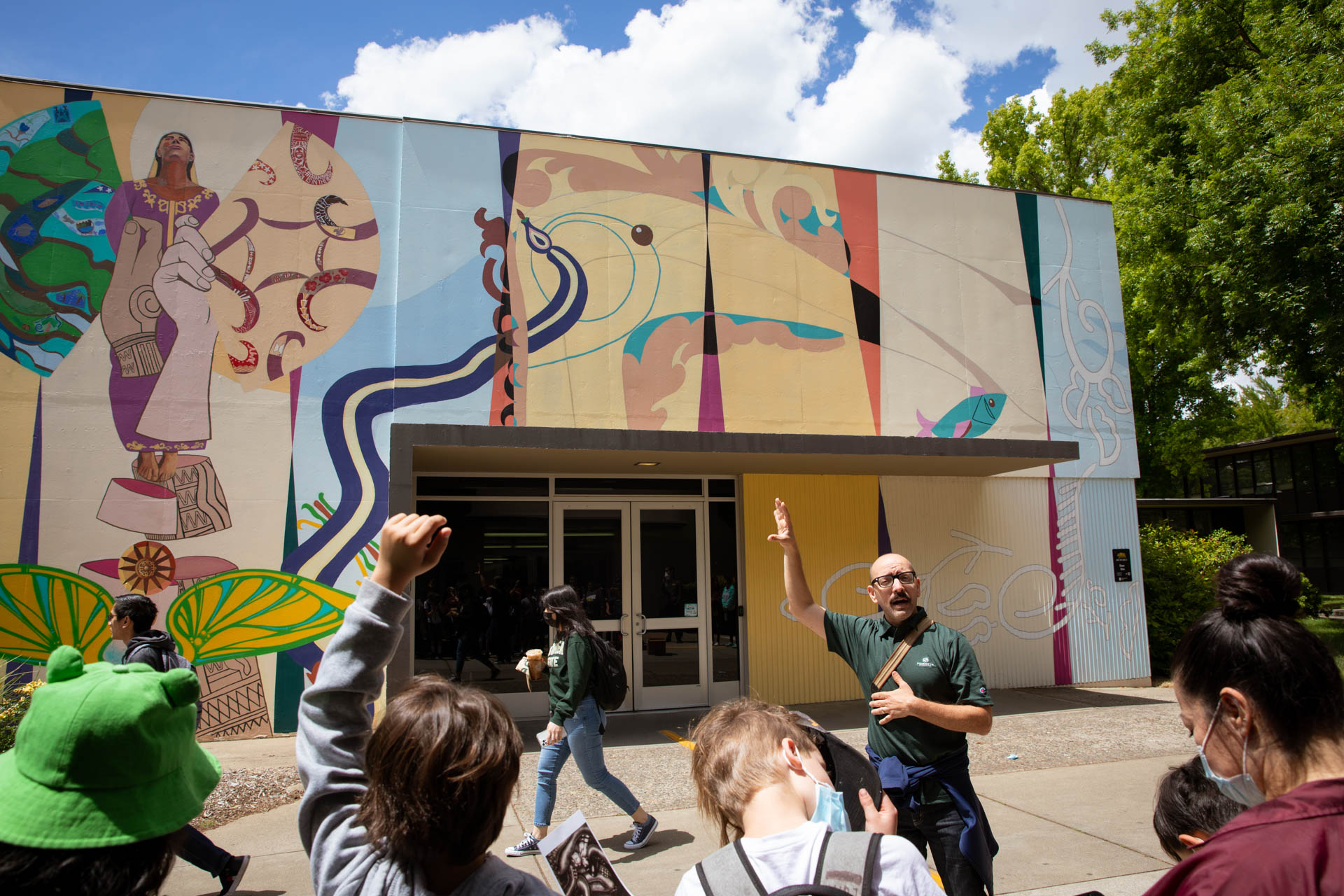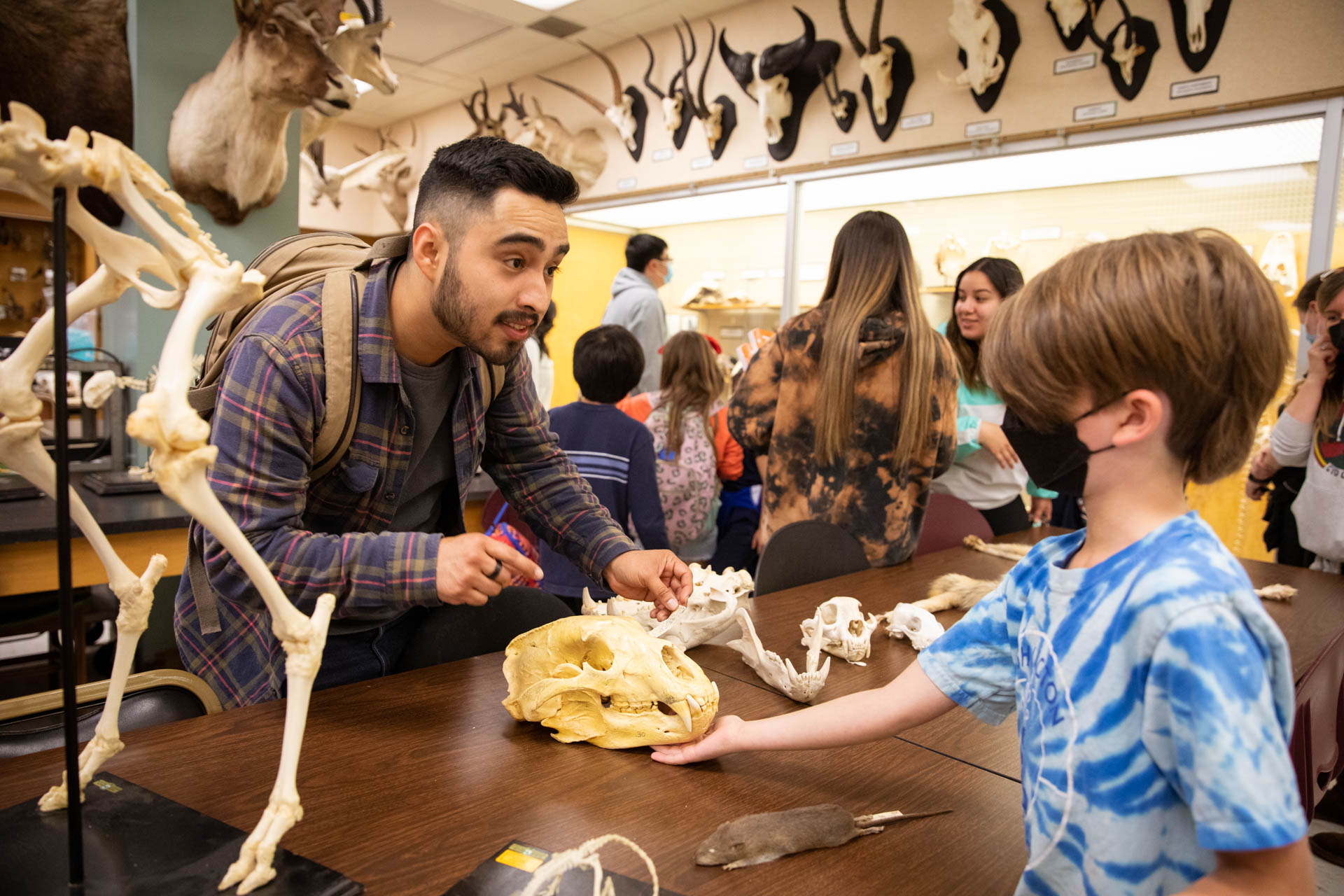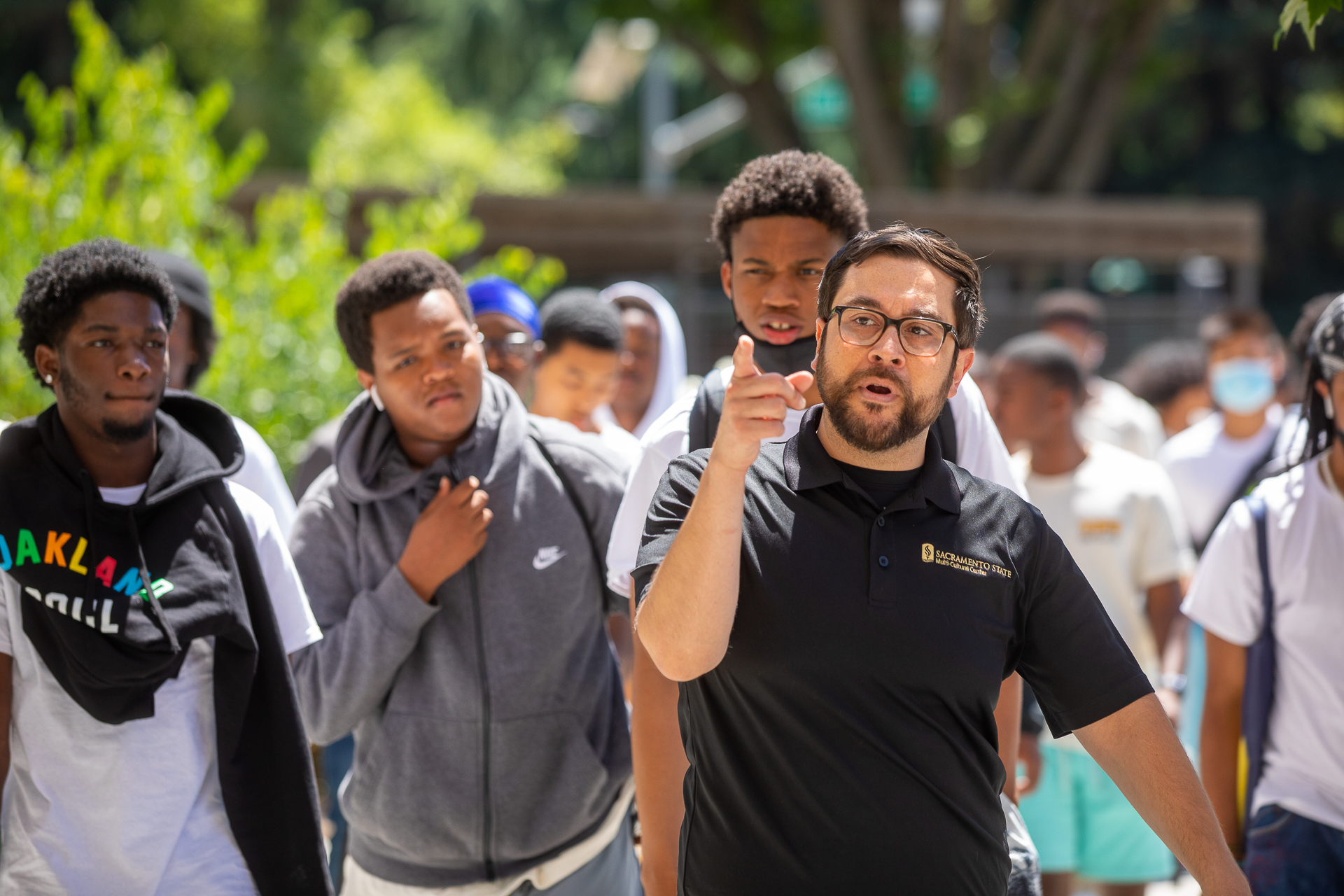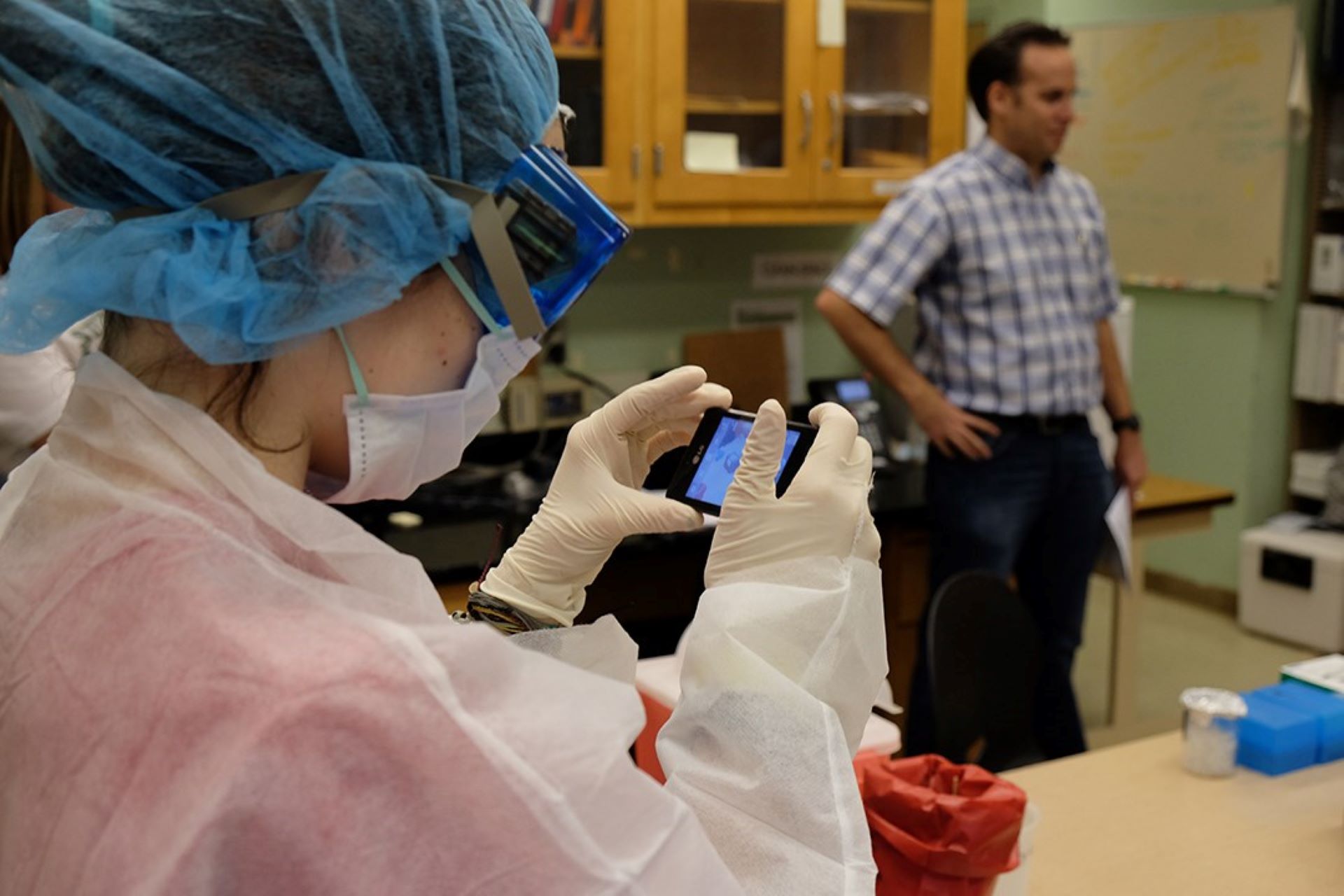Story Content
Barrio art course teaches students how to work with, learn from, and better engage communities they serve

June 21, 2022
“What do you see?” Luis Garcia asks the elementary school students assembled in front of one of Sac State’s campus murals.
A person, says one student. A fish, says another. Hands. Water.
“You’re talking about art simply by sharing what you see, and what I want you to think about is not to be intimidated when you go to spaces where you see art,” said Garcia, an assistant professor of Art. “You simply talk about them, and you are not wrong, because it’s what you see and what you think.”
The students, from Washington Elementary School in Sacramento’s Alkali Flats neighborhood, were on campus in early May as part of Garcia’s “Barrio Art in the Community” class, which he taught during the spring semester.

During the course, Garcia’s Sac State students learned about the historical and political contexts of what is known as barrio art, while working directly with Washington Elementary students and their families.
The goal, Garcia said, is to teach students how to interact with Sacramento’s diverse communities, learn from them, and develop culturally relevant ways for them to engage with art so that they feel welcomed and valued in artistic and learning spaces.
“I say this from my own experience: You just have to take a different approach if you really want to engage students in art education in communities of color, especially marginalized communities of color,” he said.
The course draws on Garcia’s own experience as a high school art teacher in Los Angeles, previous iterations of barrio art courses at Sac State, and the legacy of the Royal Chicano Air Force, an art collective founded in 1969 by Sac State faculty and students, including Jose Montoya, Ricardo Favela, and Esteban Villa, recent recipient of an honorary doctorate. Villa died in May at age 91.
Barrio art, Garcia said, refers not to a particular genre or style of art, but instead suggests where the art comes from: barrios, or neighborhoods made up of marginalized populations.
In the art world, barrio art – examples include graffiti and murals – often is viewed separately from other art forms, he said.
“There’s often a reference to fine art, and then there's a reference to folk art,” Garcia said. “To me, why can't those both of those be fine art?”
He said it’s important for people who seek to work with marginalized communities to counter that bifurcated thinking by engaging with them directly to understand their experiences and learn what they have to offer.
During the course, students learned about various forms of barrio art and how current artists have worked in barrios, how art has been used as a vehicle for change, and how marginalized artists have created spaces for themselves.
Off campus, Sac State’s students tutored Washington Elementary students and developed programming such as art and wellness workshops at the nearby Washington Neighborhood Center.
"You just have to take a different approach if you really want to engage students in art education in communities of color, especially marginalized communities of color.” - Luis Garcia
Garcia said that work spoke to the desire to get students to engage with the communities they were serving. That means learning from them, and using that information to develop cultural lessons and activities those communities can relate to by seeing themselves or their experiences reflected in them, for example.
“You want to develop your teaching approaches developing and identifying ways to teach in the barrio,” he said. “Barrio art is focused on ways of engaging, connecting, and being relevant to marginalized communities.”
Hector Rodriguez, an Ethnic Studies major who graduated in May, grew up in South Central Los Angeles, “so when we talk about our barrio or our hood, that’s why barrio art stood out to me, and its emphasis on trying to bring out the community through art.”
Rodriguez was on hand during the Washington Elementary visit, during which the young students visited the University’s invertebrate museum and took in a show at the planetarium. He plans to become a social worker, something inspired in part by his experience as a former foster youth. He said working with local students and seeing their passion was his favorite part of the course. Although not an artist, Rodriguez said the experience taught him unexpected lessons that will be useful in his future career.
“I realized through methods employed in art that art can actually connect with kids and their families,” Rodriguez said. “It opens up pathways for us to communicate with kids.
“This has opened up my eyes for how art education methods can be employed everywhere.”
Media Resources
Faculty/Staff Resources
Looking for a Faculty Expert?
Contact University Communications
(916) 217-8366
communications@csus.edu


